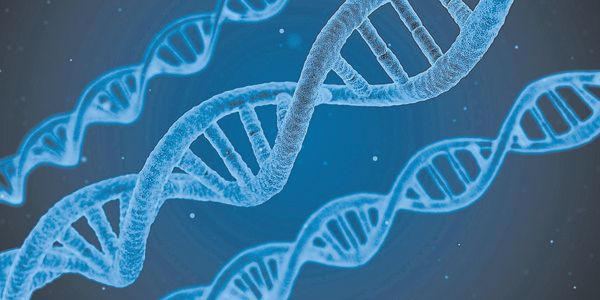Three years before his death in 1826, Thomas Jefferson, third president of the United States of America, wrote: ‘The day will come when the mystical generation of Jesus by the Supreme Being as his father, in the womb of a virgin, will be classed with the fable of the generation of Minerva in the brain of Jupiter’.1
Scepticism over the virgin birth of Jesus has escalated since then. The claim is, miracles cannot, and therefore do not happen.
Actually, the birth of Jesus was perfectly normal. There was nothing unusual about the way he was born. Jesus did not miraculously appear from nowhere in the stable in Bethlehem.
His mother, Mary, carried him in her womb through the full term of her pregnancy. Many, no doubt, congratulated her as they saw the visual evidence of an expectant mother.
It was not the birth that defied custom; rather, it was Jesus’ conception that broke the norms of human experience.
Immanuel
According to Matthew’s Gospel, Mary and her future husband (they were not yet married) had not engaged in sexual intercourse. Jesus had been conceived ‘before they came together … [Joseph] had no union with her until she gave birth to a son’ (Matthew 1:18, 25).
So what explanation does Matthew offer for the pregnancy? ‘What is conceived in her is from the Holy Spirit’ (v. 20). These were the words of an angel sent to Joseph as he considered ending the relationship and all thoughts of future marriage.
Some seven hundred years earlier Isaiah the prophet had said: ‘The virgin will be with child and will give birth to a son, and will call him Immanuel’ (Isaiah 7:11-14). According to the prophet, the birth of this child would be a ‘sign’ to those who witnessed it.
Based on this biblical testimony, the church down the ages has confessed: ‘we all with one accord teach men to acknowledge one and the same Son, our Lord Jesus Christ … begotten, for us men and for our salvation, of Mary the Virgin, the God-bearer…’ (Chalcedon, A.D. 451).

Incredible
It sounds incredible, doesn’t it? Indeed, even theologians have fallen over themselves in the rush to explain away these statements of Matthew (and similar ones by Luke).
They have suggested that such statements were made late in the first century to bolster the claims then being made about Jesus’ deity. A virgin birth, after all, adds a layer of mystery to an otherwise bland story about a child born into an obscure family in Palestine.
Like all sceptics, these people begin with the hypothesis: ‘Miracles do not happen’. Having stated this premise, they must then offer some alternative explanation. Why did Bible writers like Matthew and Luke record the birth of a child to a virgin?
Some dismiss the story as an example of the church’s confusion over the propriety of sex. A Saviour born as the result of sexual union, they suggest, would somehow be inappropriate. Even the great Augustine flinched here.
Others complicate the issue by claiming that Mary herself was ‘immaculately conceived’. They think this safeguards the sinlessness of Jesus – because although the virgin birth means that none of Joseph’s chromosomes were passed on to Jesus, Mary’s chromosomes were present. So Mary has to be sinless too!
Others have gone on to insist that Mary remained a virgin for the rest of her life – despite the fact that Bible records the fact that Jesus had siblings (Matthew 12:46-48).
Needless to say, there is nothing in the Bible to support any of these theories.

Science no help
The straightforward truth is that, according to Scripture, Mary conceived a child without having engaged in sex. The phenomenon is sometimes called ‘parthenogenesis’ (from parthenos, Greek for ‘virgin’).
Parthenogenesis is an asexual reproductive process by which a female’s egg undergoes embryonic development without being fertilised by male sperm. Is parthenogenesis possible?
Although most higher animals reproduce sexually, some lower forms do reproduce in a parthenogenetic manner. Aphids, some ticks, water fleas, ants, wasps, bees and certain lizards and snakes, can all develop without male fertilisation.
Thus, division of a female egg by itself is possible. But it cannot be an explanation for what happened in Mary’s womb. This is because the Y-chromosomes necessary in a male offspring are not present when the X-chromosomes of the female egg divide spontaneously.
Spontaneous emergence of the Y-chromosome from a female egg is scientifically impossible.

Miraculous
We are left, then, with the miraculous as an explanation of Jesus’ human origin – just as an empty tomb signified the intrusion of the miraculous at the close of his life in this world.
At either end of the life of Christ stands a point of demarcation that renders his existence different from that of any other.
The virgin birth signals that Mary’s child is unique in human history. No one else has been born this way, before or since.
If you stumble here, there is no point in progressing further. For example, you cannot subscribe to Christ’s Sermon on the Mount and baulk at his miraculous conception. If Matthew correctly recorded the one, he must be given credit for accuracy in the other.
The Christmas story is shrouded in the most sublime mystery because the one who is at the centre of the story is unexplained and unexplainable. This does not mean that he cannot be known, but simply that there is more to him than can be explained in natural terms.

Outside ourselves
The ‘scientific method’ will be found wanting as a means to comprehend Jesus. There are aspects of his person that transcend the limitations of human thought. He defies identification and classification. The power of God lies behind his human genesis.
The virgin birth solicits faith. It says: ‘You must believe this even though it goes beyond anything you have ever witnessed in your life’ – just as does the empty tomb.
The virgin birth reminds us that salvation comes from outside of ourselves. Jesus came into the world to save sinners (1 Timothy 1:15). No one within the family of mankind could be found to serve as an adequate Saviour. This is a reflection on the extent of our fallen condition.
The Deliverer had to come from outside this world-order. Otherwise he would be part of it and would share its fallen character. He could not be the product of human genesis or evolution; nor even human volition.
Luke tells us that the Holy Spirit ‘overshadowed’ Mary (Luke 1:35). The same word is used in the Greek translation of the Old Testament story of the exodus. There it describes the cloud of glory that descended on the Tabernacle, signifying the very presence of God among his people (cf. Exodus 40:35).
This is the essence of the matter. Another name for Jesus is ‘Immanuel’, which means ‘God with us’. Jesus Christ was God in human flesh. No wonder his birth was unique!

A new creation
The virgin birth further suggests that God was making a new creation when he brought Jesus into the world. He was beginning something new.
The present creation is insufficient, for it is sin-cursed and in need of redemption. Jesus saves sinners by bringing them to a new (that is, spiritual) birth, as explained on page 14 of this paper.
Again, the apostle Paul declares: ‘if anyone is in Christ, he is a new creation; old things have passed away; behold, all things have become new’ (2 Corinthians 5:17).
But the Saviour intends to save his people, not just by calling them to believe in and follow him in this life, but ultimately by making all things new on a cosmic scale.
This new created order is described in the Bible as’new heavens and a new earth in which righteousness dwells’ (2 Peter 3:13).
Boiling it down
It all boils down to faith. As C. S. Lewis so famously put it: ‘Either this man [Jesus] was, and is, the Son of God: or else a madman or something worse. You can shut him up for a fool, you can spit at him and kill him as a demon; or you can fall at his feet and call him Lord and God.
‘But let us not come with any patronising nonsense about him being a great human teacher. He has not left that open to us. He did not intend to.’
The Christmas story has at its heart a message of profound joy: that forgiveness of sins is possible to the worst sinner who believes that Jesus – the infant born of a virgin – is the Son of God.
The question is, do you believe it?



